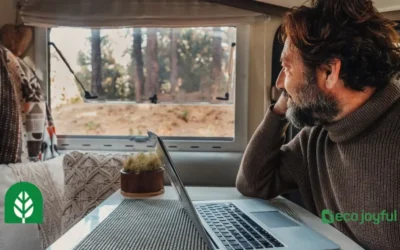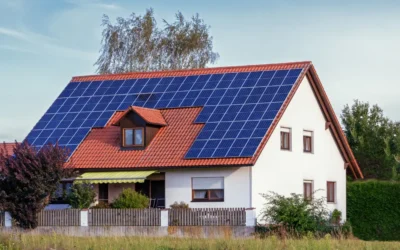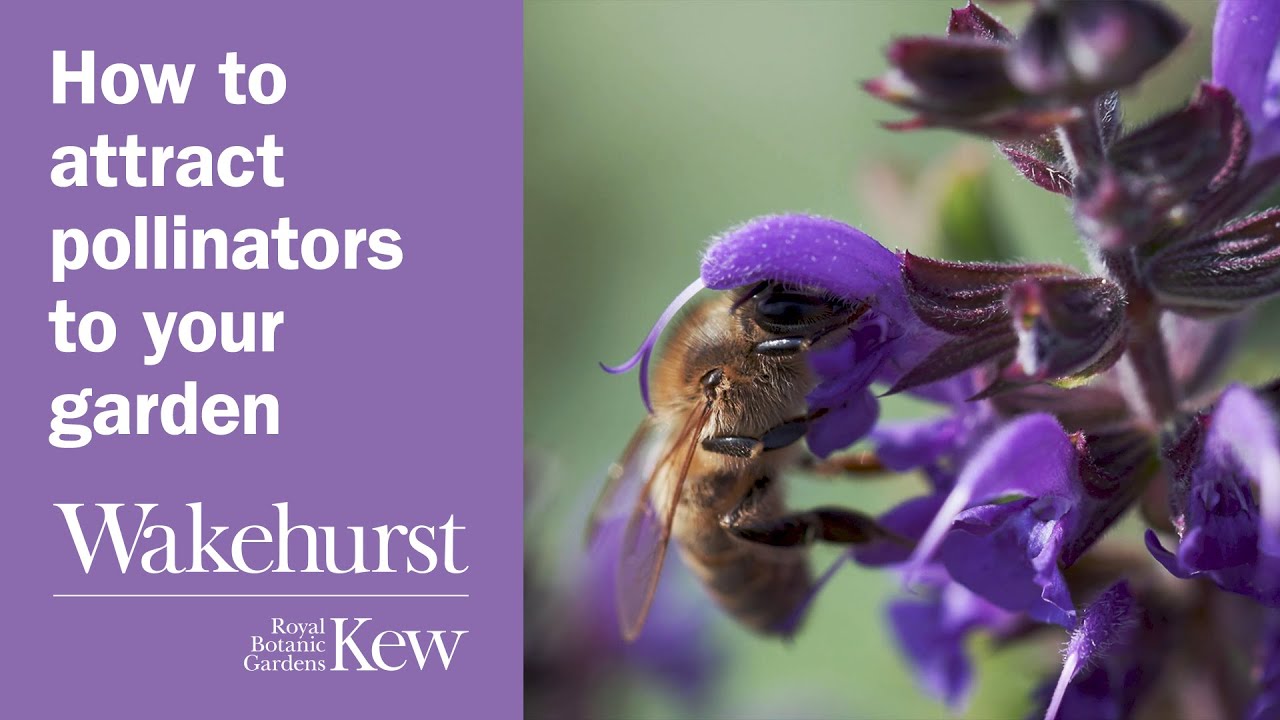Attract pollinators by planting native flowers and providing shelter and water sources. Creating a pollinator-friendly garden can be as easy as incorporating a few key elements such as diverse and colorful plant species, nesting sites, and shallow water sources.
Pollinators are responsible for fertilizing plants and crops, making them an essential component of a healthy and thriving ecosystem. Without pollinators, we would lose a large portion of the food we rely on. By attracting bees, butterflies, birds, and other pollinators to your garden, you can help support their populations and ensure the continued pollination of our food supply.
We will explore some easy ways to attract pollinators to your garden and help protect these important species.
Table of Contents
The Importance Of Pollinators
Attracting pollinators to your garden is crucial for the growth and health of plants. Bees, butterflies, and other pollinators help in the cross-pollination of plants, which can increase yield and improve the quality of fruits and vegetables. You can attract these valuable insects to your garden by planting flowers, herbs, and other plants that are rich in nectar and pollen.
Why Pollinators Matter
Pollinators play a vital role in maintaining a healthy ecosystem, with their pollination services being worth an estimated $235-$577 billion per year globally. These include bees, butterflies, birds, and even some mammals such as bats, which help transfer pollen from the male to female parts of the flower, leading to fertilization and a successful plant reproduction. Without pollinators, life for humans and animals alike would be very different.
The Role Of Pollinators In Plant Reproduction
Pollinators are essential for the reproduction of many plants, both food crops that we rely on and many wild plants that are critical for sustaining wildlife. According to research, pollination increases the yield of many crops, including apples, coffee, and almonds. Additionally, pollinators help to improve the quality of fruit and seeds produced, making them healthier and more nutritious for humans and wildlife.
Tips For Attracting Pollinators To Your Garden
Attracting pollinators to your garden is a win-win situation. While you get to enjoy beautiful flowers and homegrown produce, pollinators get the nutrition they need to continue their vital work. Here are a few tips for attracting pollinators to your garden:
- Plant a variety of flowers that bloom at different times throughout the growing season.
- Avoid using pesticides, which can harm pollinators and other beneficial insects.
- Provide nesting habitats, such as bee houses and birdhouses, for pollinators to nest and raise their young.
- Add a shallow water source, like a birdbath or small pond, to help pollinators stay hydrated.
So, whether you have a small balcony garden or a large backyard, there are many ways to attract pollinators and help promote a healthy ecosystem. By taking the time to provide a safe habitat for these critical creatures, you not only contribute to their survival, but you also help to ensure a healthy environment for all living things.
Identifying Pollinators
Attracting pollinators to your garden starts with identifying them. Bees, butterflies, and hummingbirds are all important pollinators. Planting colorful flowers and providing a water source can help attract these crucial helpers to your garden.
Pollination is critical for the survival and reproduction of plants. Without pollinators, your garden crops and ornamental plants will fail to produce fruits, vegetables, and seeds. Identifying pollinators is a crucial step in attracting them to your garden and ensuring that your plants reproduce. In this section, we will explore the different types of pollinators and how to attract specific ones to your garden.
Types Of Pollinators
Pollinators are organisms that help plants to transfer pollen from the male reproductive organ (stamen) to the female reproductive organ (pistil). This transfer of pollen results in fertilization, and the communication of genetic information between different plants. Here are some common types of pollinators:
| Type of Pollinator | Description |
|---|---|
| Honeybees | Small, fuzzy, and striped insects that collect nectar and pollen from flowers. |
| Bumblebees | Larger than honeybees with a fuzzy appearance. Also collect nectar and pollen from flowers, and can pollinate flowers with a more significant force. |
| Butterflies | Brightly colored with delicate wings, butterflies help pollinate flowers with their long proboscis, which can reach deep into the flower to collect nectar. |
| Flies | Flies are attracted to flowers with a strong smell and vivid colors. They effectively transfer pollen from flower to flower as they feed on nectar. |
| Hummingbirds | Small, energetic birds with long beaks that feed on nectar from flowers with deep corollas. |
Attracting Specific Pollinators
Different pollinators are attracted to different types of flowers based on their size, shape, and color. Here are some tips for attracting specific pollinators to your garden:
- To attract honeybees and bumblebees, plant flowers with blue, purple, or yellow petals such as lavender, salvia, and sunflowers. These flowers also produce lots of nectar and pollen, which bees need to produce honey and feed their young.
- Butterflies are attracted to flowers with bright colors such as red, orange, and pink, such as butterfly bush and milkweed. Butterflies also prefer flowers with a landing pad, such as coneflowers and black-eyed Susans.
- Flies are attracted to flowers with a putrid smell, such as the corpse flower and skunk cabbage. Additionally, they prefer flowers that have a shallow corolla and a wide landing pad.
- Hummingbirds are attracted to brightly colored flowers such as red, orange, and pink, such as trumpet vine, bee balm, and cardinal flower. These flowers also have a long tubular shape that is ideal for hummingbird beaks.
By identifying different pollinators and the plants they are attracted to, you can create a garden that is abundant with diverse pollinators and beautiful flowers. With these tips, you can now create a garden that attracts specific pollinators and benefits the environment.
Creating A Pollinator-friendly Garden
Attracting pollinators to your garden is easy and essential for a healthy ecosystem. Plant a variety of flowers, shrubs, and trees that bloom throughout the growing season and avoid using pesticides and herbicides. Creating a pollinator-friendly garden will not only benefit the environment, but also create a beautiful and vibrant space.
Creating a Pollinator-Friendly Garden is not only good for the environment, but it also helps keep your garden healthy and blooming. Pollinators such as bees, butterflies, and hummingbirds play a crucial role in the pollination of plants, ensuring the growth of fruits, vegetables, and beautiful blooms.
Selecting The Right Plants:
Choosing the right plants is crucial to attract pollinators to your garden. Select plants that bloom at different times, creating a continuous food source for pollinators. Choose brightly colored flowers such as yellow, blue, and purple as they attract bees and butterflies. Native plants are also an excellent option as they are adapted to the local climate, making it easier for pollinators to survive.
Planting Techniques For Pollinators:
Proper planting techniques are essential in creating a pollinator-friendly garden. Plant flowers in clusters to make it easier for pollinators to move from one flower to another. Avoid using pesticides and herbicides as they can harm pollinators. If possible, plant crops and flowers that are organic and non-GMO.
Providing Shelter And Nesting Sites:
Besides food, pollinators require shelter and nesting sites to survive. Create a habitat for pollinators by adding nesting materials such as hollow stems, twigs, and dead branches. Create bee hotels and nesting boxes to provide safe shelter for bees and other pollinators.
In conclusion, creating a pollinator-friendly garden is a simple but essential step to ensure the health and survival of pollinators. Consider selecting the right plants, using proper planting techniques, and providing shelter and nesting sites to attract pollinators to your garden. By creating a safe and healthy habitat for pollinators, you are contributing to a healthier and more balanced ecosystem.
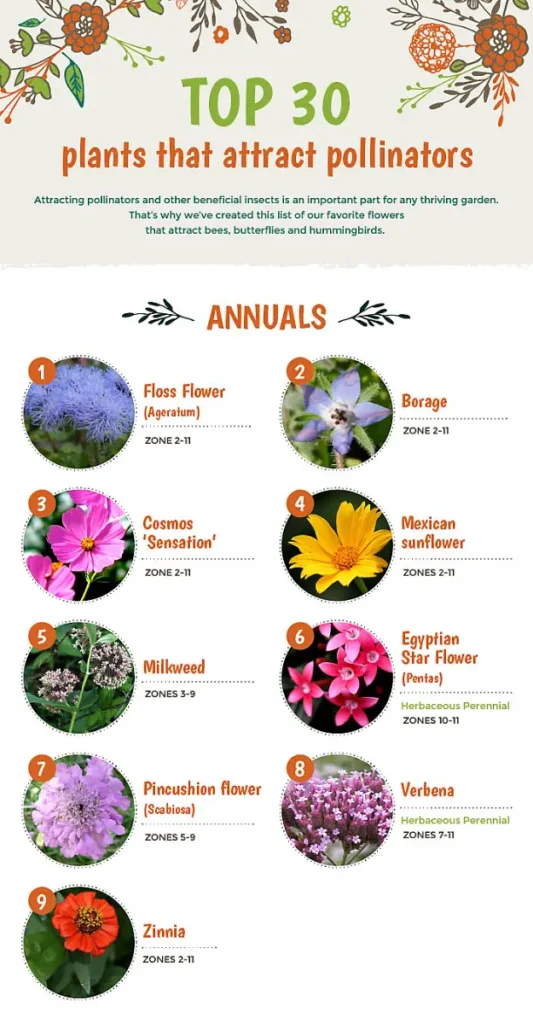
Credit: www.saferbrand.com
Avoiding Harmful Practices
When it comes to attracting pollinators to your garden, avoiding harmful practices is key. While you might think a certain pesticide or herbicide will protect your plants, it could actually harm the very insects you are trying to attract. Here are some important considerations to keep in mind:
The Dangers Of Pesticides To Pollinators
Pesticides are chemicals that are used to kill pests such as insects and rodents. However, these chemicals can also harm beneficial insects like pollinators. When pollinators feed on plants that have been treated with pesticides, they can become sick or die. Studies have shown that pesticides can also interfere with a pollinator’s ability to navigate and find food, which can have serious consequences for their survival.
If you must use pesticides, consider using them sparingly and only when necessary. You can also look for products that are labeled as safe for pollinators. Additionally, avoid using pesticides during times when pollinators are most active, such as in the early morning or evening hours.
Alternatives To Chemical Pest Control
Fortunately, there are many safe and effective alternatives to chemical pest control that can help protect your plants and pollinators alike. Here are some options to consider:
| Option | Description |
| Companion planting | Planting certain species of plants together can help repel pests or attract beneficial insects. |
| Handpicking | If you only have a few pests, you can remove them by hand. |
| Biological control | Introducing natural predators or parasites to your garden can help control pest populations. |
| Organic sprays | There are many organic sprays available that can help control pests without harming pollinators. |
By avoiding harmful practices like using pesticides and opting for safe, natural alternatives instead, you can create a healthy and thriving environment for both your plants and pollinators.
Maintaining Your Pollinator Garden
Once you’ve created a pollinator-friendly garden, it’s important to maintain it to ensure that pollinators continue to visit. Here are some tips for keeping your garden healthy and attractive to pollinators.
Watering And Irrigation For Pollinators
Water is essential for both plants and pollinators. Provide water sources such as bird baths, fountains, or shallow dishes of water for pollinators to drink. Ensure that your garden has enough moisture, especially during dry spells, and avoid watering during the hottest parts of the day when water evaporates quickly.
Mulching And Fertilization Strategies
Mulching and fertilizing are important for maintaining soil moisture and nutrient levels, but it’s also important to use these techniques in moderation. Avoid overmulching and overfertilizing, as this can lead to a buildup of nutrients that can harm pollinators and other beneficial insects. Use natural fertilizers, such as compost or well-rotted manure, and choose organic mulches, such as leaves or straw.
To avoid disturbing pollinators, use caution when applying mulch or fertilizer, and avoid getting it on flowers or in water sources. Instead, apply mulch in a thin layer around the base of plants, and apply fertilizer to the soil around the plants.
By following these simple tips, you can create a beautiful and functional pollinator garden that benefits both your plants and the pollinators that visit them.
Observing And Monitoring Pollinators
Observing and monitoring pollinators is an essential step in attracting them to your garden. By providing a diverse range of plants and flowers, you can create a habitat that attracts bees, butterflies and other pollinators, enhancing the health of your garden.
Tracking Pollinator Activity In Your Garden
To attract more pollinators to your garden, it’s important to observe and track their activity regularly. As you spend time in your garden, take note of which pollinators are visiting your flowers, their behavior patterns, and the time of day they visit.
One effective way to track pollinator activity is to create a simple chart or spreadsheet, where you can record the following information:
- Types of pollinators you see
- The time of day they visit
- Their behavior patterns
- The flowers they visit most frequently
By keeping track of this information, you’ll be able to identify which flowers attract the most pollinators and learn more about the pollinators that visit your garden regularly.
Recording And Analyzing Pollinator Data
Once you’ve tracked pollinator activity in your garden, it’s time to analyze your data. Look for patterns in the behavior of the pollinators that visit your garden, and note which flowers they seem to prefer.
Consider creating a bar graph or other visual aid to represent your data, so you can easily see which flowers attract the most pollinators and which pollinators are most active in your garden.
Based on your findings, you can adjust your planting strategy to better cater to the pollinators that visit your garden. For example, if you find that bees are the most active pollinators in your garden, you may want to plant more flowers with blue and purple hues, as these colors are known to attract bees.
By observing and monitoring pollinators in your garden, you’ll not only attract more of these beneficial insects, but you’ll also gain a greater appreciation for the vital role they play in our ecosystem.
Partnering With Local Pollinator Conservation Efforts
One way to attract pollinators to your garden is by partnering with local pollinator conservation efforts. These organizations can provide advice on the best plants to grow and create habitats for bees, butterflies, and other pollinators. Supporting conservation efforts can also help ensure the long-term health of these important species.
Supporting Community Pollinator Initiatives
You can partner with local organizations that work to preserve pollinators. These groups can offer insights into the best ways to attract and nourish pollinators in your garden. Additionally, they can educate you on the types of plants and flowers that are most likely to attract specific pollinators. Supporting these groups is an excellent way to give back to your community while also enhancing your garden’s pollination potential.
Volunteering With Pollinator Research And Conservation Projects
Volunteering your time with research and conservation groups is another way to support pollinator populations. These organizations conduct vital work researching the factors that impact pollinator populations and working to mitigate those risks. Volunteering with these groups gives you a chance to gain valuable knowledge about local pollinator populations while also giving you the opportunity to make a tangible difference in their conservation.
Taking Action To Support Pollinators
In addition to supporting local organizations, you can take specific actions on your own to attract pollinators. For example, planting native plants in your garden that are abundant in nectar and pollen can help attract pollinators. Additionally, providing areas where pollinators can shelter and reproduce, such as with bee hotels and nesting boxes, can help support local populations. By taking steps to enhance the pollination potential of your garden, you play an active role in supporting pollinators and preserving vital components of the ecosystem.
In conclusion, partnering with local pollinator conservation efforts is a simple way to support pollinators while enhancing your garden’s ecosystem. Consider supporting local organizations, volunteering your time, and taking actions on your own to attract pollinators. By doing so, you can make a meaningful contribution to protecting the planet’s natural resources while also increasing yields in your garden.
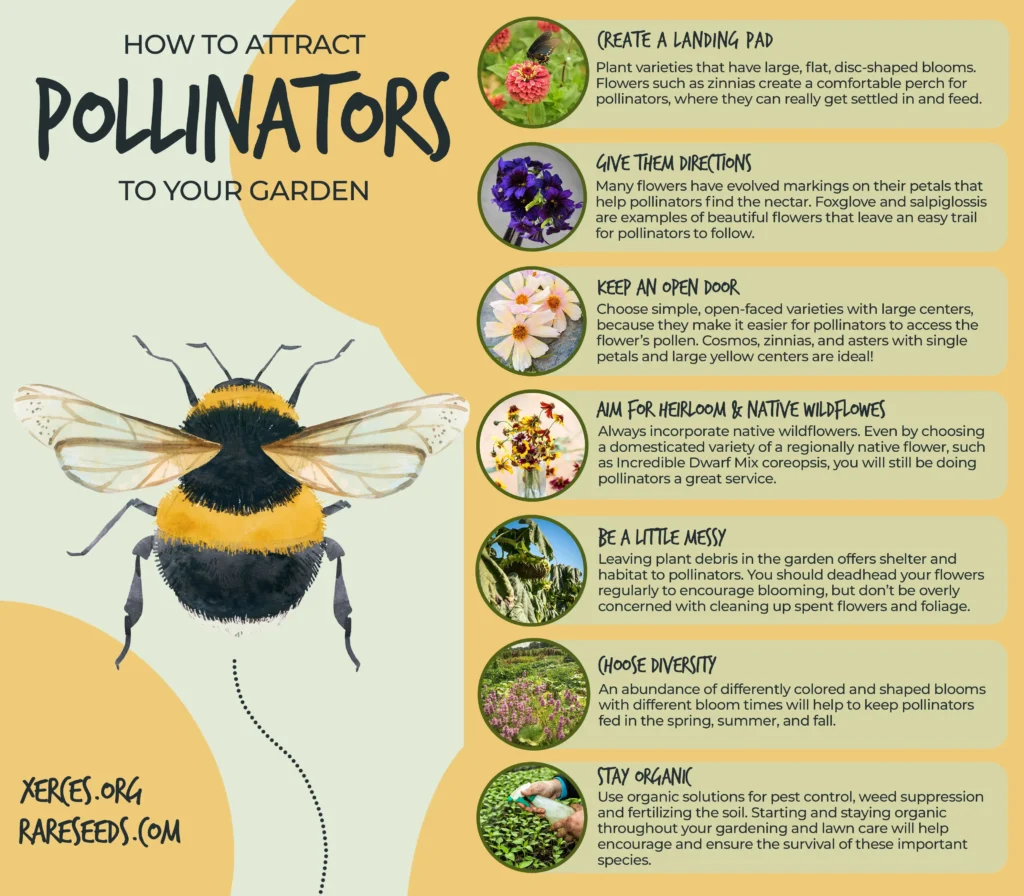
Credit: www.pinterest.com
Celebrating The Beauty And Diversity Of Pollinators
Attracting pollinators to your garden is essential to celebrate their beauty and diversity. Plant flowers, herbs, and fruits that are rich in nectar and pollen and avoid using pesticides to create a natural habitat for pollinators like bees, butterflies, and birds.
Appreciating The Aesthetics Of Pollinator Gardens
Pollinators are not only significant for the growth of the plants but also add charm and beauty to our gardens. By creating a pollinator-friendly garden, you can attract an array of gorgeous creatures that add vibrancy and life to the scenery. The hummingbirds, butterflies, bees, and moths rightly deserve admiration. Adding a pop of color to your garden by incorporating a variety of blooming flowers will not only attract pollinators, but it will also be pleasing to the eye.
Sharing Your Love Of Pollinators With Others
Amongst the many advantages of owning a pollinator garden, sharing your love of pollinators with others is an added bonus. Educating your friends, neighbors, and family about the significance of these tiny creatures and explaining how they are helping the environment will encourage them to create their pollinator gardens. You could organize workshops and awareness sessions to educate the community about the beauty and importance of pollinators and inspire them to take care of them. By creating a network of pollinator gardens, you can encourage a healthier and sustainable environment.
Conclusion
Celebrating the beauty and diversity of pollinators is a gratifying experience that provides us with an opportunity to connect with nature. By creating a pollinator garden, you not only attract an array of fascinating creatures but also encourage a sustainable environment. Sharing your love of pollinators with others helps spread awareness and encourages more people to take action, creating a community that is dedicated to preserving our pollinators and the environment.
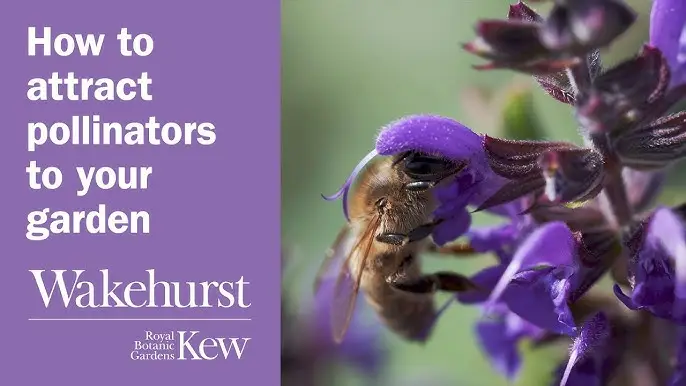
Credit: www.youtube.com
Conclusion
To sum up, attracting pollinators to your garden is not a difficult task if you follow the above-mentioned tips. Incorporating native plants, creating a water source, and avoiding pesticides are all great ways to make your garden a welcoming habitat for pollinators.
By planting diverse flowers and herbs, you are not only helping to preserve our environment but also growing a beautiful and thriving garden. So, go ahead and get started on attracting pollinators to your garden today!


